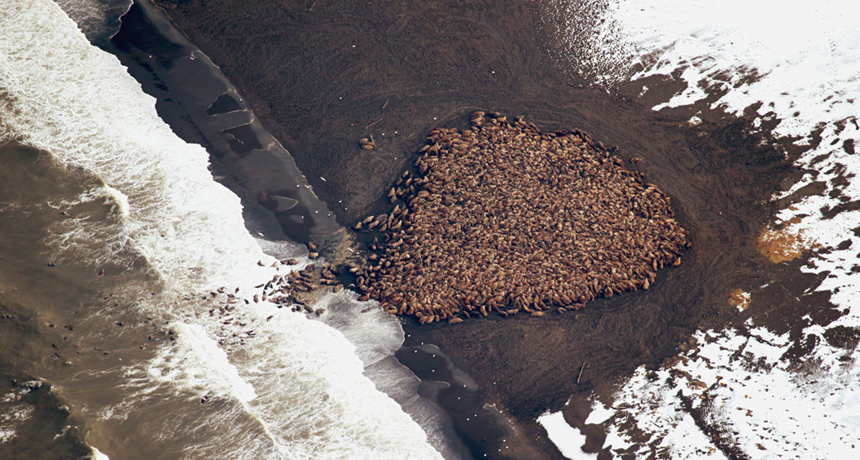Melting ice forces walrus detour

ALL TOGETHER A gigantic group of walruses has gathered near Point Lay, Alaska, on the shore of the Chukchi Sea.
Corey Accardo, NMML/AFSC/NMFS/NOAA

ALL TOGETHER A gigantic group of walruses has gathered near Point Lay, Alaska, on the shore of the Chukchi Sea.
Corey Accardo, NMML/AFSC/NMFS/NOAA